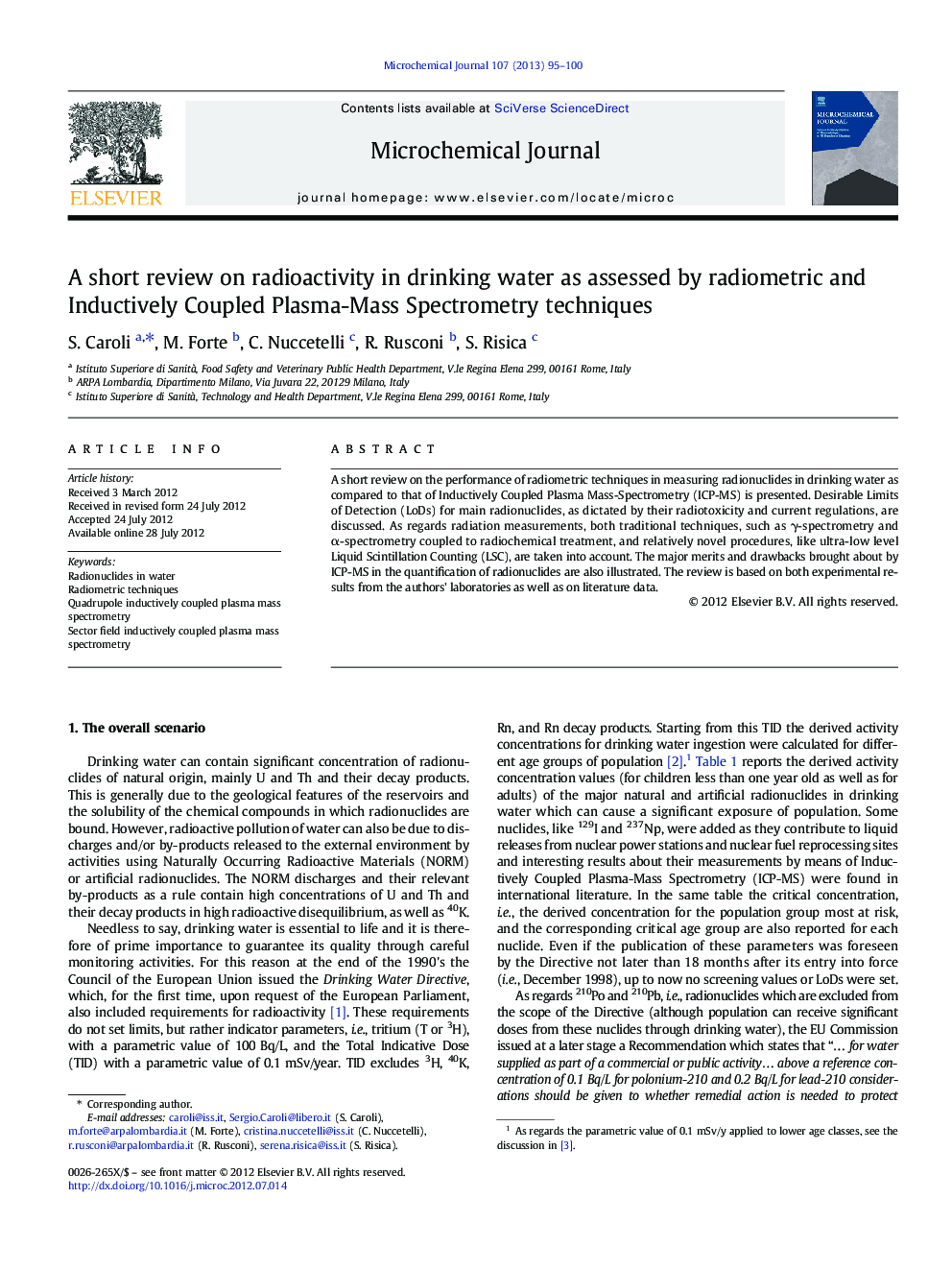| Article ID | Journal | Published Year | Pages | File Type |
|---|---|---|---|---|
| 1227861 | Microchemical Journal | 2013 | 6 Pages |
A short review on the performance of radiometric techniques in measuring radionuclides in drinking water as compared to that of Inductively Coupled Plasma Mass-Spectrometry (ICP-MS) is presented. Desirable Limits of Detection (LoDs) for main radionuclides, as dictated by their radiotoxicity and current regulations, are discussed. As regards radiation measurements, both traditional techniques, such as γ-spectrometry and α-spectrometry coupled to radiochemical treatment, and relatively novel procedures, like ultra-low level Liquid Scintillation Counting (LSC), are taken into account. The major merits and drawbacks brought about by ICP-MS in the quantification of radionuclides are also illustrated. The review is based on both experimental results from the authors' laboratories as well as on literature data.
► Legal aspects for monitoring long-lived radionuclides in natural water. ► Determination of long-lived radionuclides in water by radiometric techniques. ► Determination of long-lived radionuclides in water by inductively coupled plasma mass spectrometry. ► Comparison of radiometric and inductively coupled plasma mass spectrometry. ► Suggested upper concentration values for radionuclides in drinking water.
